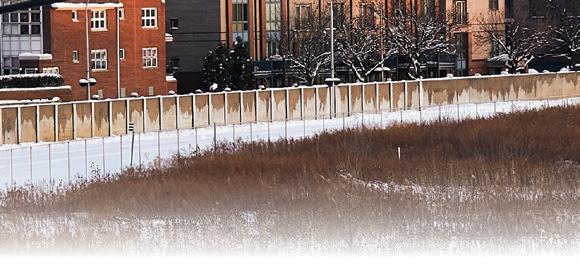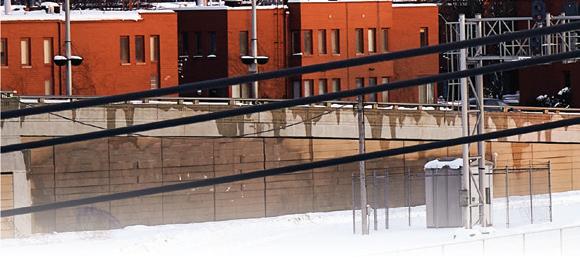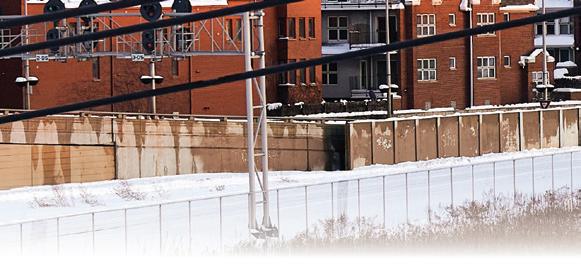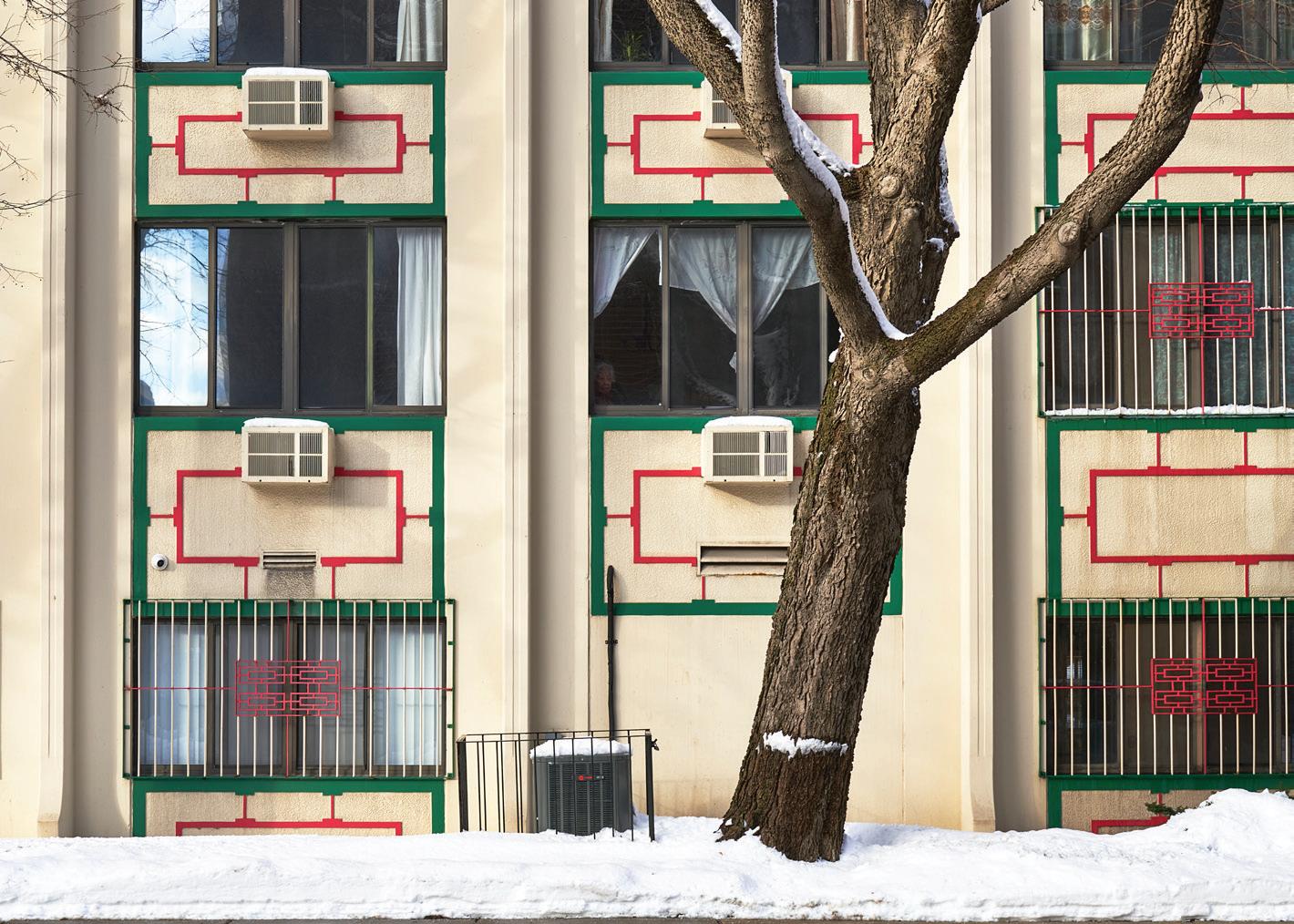
9 minute read
shows an exodus to the South and West yilun cheng


Advertisement




T e Displacement of Chinatown’s Low-Income Residents Is Aggravated by COVID-19










IN 2019, THE CITY APPROVED PLANS TO BUILD THE MASSIVE HIGH-END DEVELOPMENT “THE 78” ON VACANT LAND BETWEEN THE LOOP AND CHINATOWN, SPURRING FEAR THAT SUCH PROJECTS WILL ENCROACH ON THE SPACE OF LONGTIME RESIDENTS. PHOTO BY SARAH DERER
Data from the Chinese American Service League shows an exodus to the South and West
BY YILUN CHENG
At the intersection of Cermak Road and Wentworth Avenue, a stately red gate with a handpainted inscription that reads “T e world is for all” welcomes visitors to Chinatown.
Dim sum restaurants, grocery stores, and Chinese medicine shops line the streets to serve the nearly 7,000 people living in the area. But the very thing that has long distinguished Chinatown––its close-knit Chinese population––is being dispersed throughout the city as the pandemic-induced economic downturn puts a striking number of Chinatown residents out of work.
In recent years, rising rental costs, combined with high poverty rates and a lack of af ordable housing, have forced an increasing number of lowincome Chinese Americans to abandon their longtime residences in Chicago’s greater Chinatown area. Such housing challenges have long haunted the historic neighborhood, said Paul Luu, the CEO of the nonprof t Chinese American Service League (CASL). But COVID-19 and the job losses that came with it have made it more apparent that people are struggling to pay rent and mortgages, he said, and are leaving as a result.
In the past year, Chinatown’s Chinese population has migrated south and west along Archer Avenue to more af ordable places in Bridgeport, McKinley Park, Brighton Park, and all the way to Gage Park and Archer Heights next to Midway International Airport, as shown by a heat map generated by CASL, which visualizes the displacement of more than 5,000 clients who utilize services of ered by the Chinatown-based organization.
“I’ve met families who said they’ve moved three times in the past three years,” said Luu. “When I asked them why they moved, the answer was always the cost of housing.”
Chinatown residents see drastic income drop amid COVID-19
Even before the pandemic, Chinatown had a higher-than-average poverty rate. In Armour Square, the community area where Chinatown is located, thirty-eight percent of the households live below the poverty line, compared with the city-wide average of seventeen percent, according to an analysis of census data done by the Great Cities Institute at the University of Illinois at Chicago.
As communities of color have been hit hard by the pandemic, Asian Americans have not been immune to the surge in unemployment. Across the nation, the unemployment rate for Asian Americans jumped from 2.4 percent in February to 14.5 percent in April, before slowly settling to 6.7 percent in November, according to the U.S. Bureau of Labor Statistics.
In Chicago, Chinatown businesses felt the blow of the pandemic long before Illinois’s statewide shutdown in midMarch, said Hong Liu, the executive director of Chinatown-based nonprof t Midwest Asian Health Association. In fact, some business owners started to report a nearly eighty percent drop in sales volume shortly after the f rst cluster of COVID-19 cases in Wuhan, China, broke out at the end of 2019.
“T e Chinese community started to be cautious and stopped going to restaurants starting in January,” Liu said. “Even the American people, they knew there was a huge outbreak in China, so they were afraid of coming to Chinatown to eat.”
With COVID-19 disproportionately af ecting those in the service industry, Chinatown residents—many of whom work in restaurants, retail stores, and hotels—are increasingly dependent on unemployment benef ts to survive.
In Cook County, the number of Asian Americans who f led for unemployment insurance increased by nearly sixteen times in the month of April, skyrocketing to an unprecedented level of more than 20,000 claimants––a steeper increase than that experienced by any other ethic group––according to data from the Illinois Department of Employment Security. By October, the number of claimants had dropped to
7,200. But it is still signifcantly higher than the pre-pandemic level, which had not exceeded 1,500 a month in the past fve years.
Chinatown’s renters and homeowners at risk of losing their homes
Chinatown rents have been rising rapidly in recent years. Weiying Zhang, a housing coordinator at CASL, said that the monthly cost of renting a two-bedroom apartment, for instance, has surged from approximately $700 fve years ago to $1,200 currently.
Data aggregated by the apartment listing website RENTCafé confrms Zhang’s observation, showing an average rental price of $1,381 in Armour Square in December 2020. Just ten years ago, according to analysis by the Chicago Rehab Network, the area’s median monthly rent was only $548.
Chicago’s citywide afordable housing shortage also afects Chinatown residents. With 333,000 low-income households but only 217,000 afordable housing units, Chicago has a rental afordability gap of approximately 116,000 units, according to the latest report by DePaul’s Institute for Housing Studies.
Tere are nearly 400 people on the waitlist of Archer Courts, a popular 146-unit afordable housing property located in the heart of Chinatown, but only two or three families are able to move in every year, Zhang said. Seniors, especially, have a hard time securing a spot in the area’s limited senior housing facilities. According to Zhang, most of them have to wait eight to ten years before they can get of the waiting lists.
Te secrecy surrounding housing information in Chinatown makes it even more difcult for tenants who are already struggling to pay rent to cope with the additional economic hardship brought by COVID-19.
Many landlords in Chinatown are small, private owners who are reluctant to report their real income and pay tax accordingly, Zhang said. Tenants at risk of homelessness could theoretically apply for Chicago’s rental assistance program, which ofers benefts that cover up to six months of rent. However, because landlords often refuse to cooperate with tenants in their grant application process, Chinatown residents have not been able to take advantage of the program, said Zhang.
Even the landlords themselves are threatened by the increased risk of foreclosure, according to Grace Chan McKibben, the executive director at the nonproft Coalition for a Better Chinese American Community.
“In other communities, when people talk about housing challenges, they focus only on renters,” Chan McKibben said. “Whereas in the Chinatown area, there are many small landlords because the Chinese culture values investing in real estate so much that even folks that are relatively low-income want to purchase an additional apartment as soon as they save some money.”
As such, Chinatown’s private landlords are under growing fnancial strain as more renters are unable to make payments on time. Over the past two decades, the 25th Ward, where Chinatown is located, has seen the third-highest property tax increases across all Chicago wards. It is becoming less and less feasible for these low- to middle-income homeowners to maintain their regular rental income, said Chan McKibben.

Te move to the West leaves the older generation more isolated than ever
In contrast with the experience of other Chinatowns across the nation, such as those in Boston, New York, and Philadelphia, Chicago’s Chinatown still remains majority Asian. Census data shows that seventy-three percent of the Armour Square population is of Asian descent.
But the recent infux of more wellto-do immigrants from mainland China and young Chinese professionals is changing the neighborhood’s dynamics, organizers said, making the place less recognizable for the working-class Cantonese-speaking immigrants who used to dominate the community.
“Te older people that have lived in Chinatown for a while tend to only speak Cantonese and not much English and not much Mandarin,” Chan McKibben said. “Tey are still getting used to the new environment.”
For the older generation, Chinatown ofers them a sense of belonging in a city where they cannot assimilate. But as residents continue to scatter across Chicago, it becomes harder for community organizations and service providers to reach out to these more vulnerable populations.
“When seniors moved from Chinatown with their sons or daughters, they might become very, very isolated,” Luu said. “What we fear is that they are getting further away from us and other services like Chinese grocery stores, Chinese restaurants, the Chinatown library, and Chinese churches in Chinatown, which makes it difcult for them to be a part of the community.”
“Imagine if you’re an eighty-yearold woman traveling on a bus that stops at every stop from Archer Heights to Chinatown,” Luu continued. “Tat’s a forty-minute one-way bus ride!”
George Villanueva, an assistant professor of advocacy and social change at Loyola University who studied the displacement pattern in Chicago’s Chinatown, argues that the experience of Chinatown residents is just another example of how the working class in ethnic enclaves gets left out of the city’s urban transformation process.
“Chinatown is similar with other neighborhoods in Chicago in that it’s usually the marginalized and the working class in the community that is the most vulnerable,” Villanueva said.
In 2019, the city approved plans to build the massive high-end development “Te 78” on vacant land between the Loop and Chinatown, spurring fear that such projects will encroach on the space of longtime residents.
“You get the tensions around the whole idea of whether those communities are going to be displaced in favor of younger professional classes,” Villanueva continued. “Tat’s not equitable development if you're just paying attention to giving more resources to people who already have the resources.” ¬
Yilun Cheng is a freelance journalist who reports on housing, immigration, race relations, and other social justice issues in Chicago and beyond. She holds a political science M.A. from Columbia University and is currently working toward her MSJ degree at the Medill School of Journalism.










